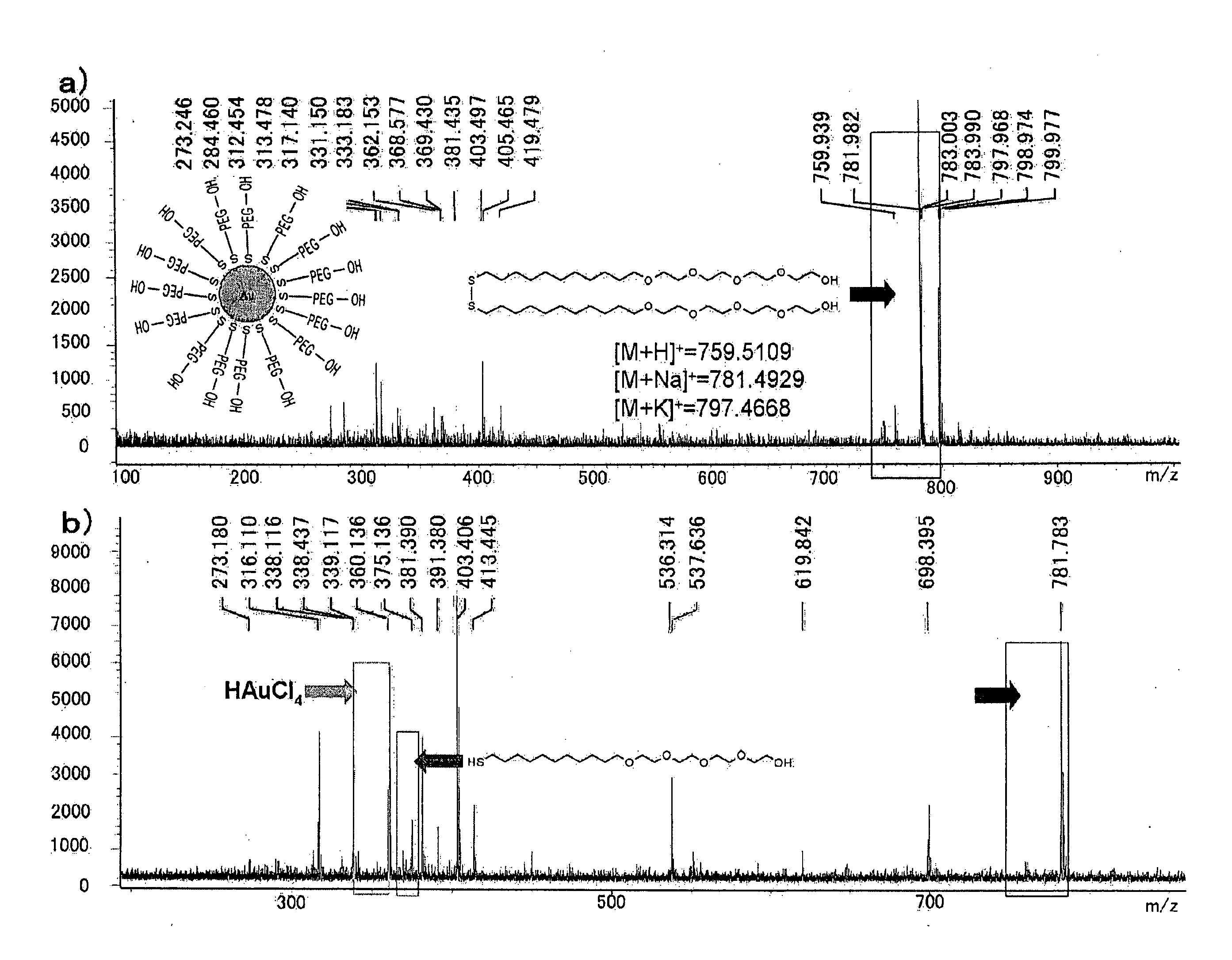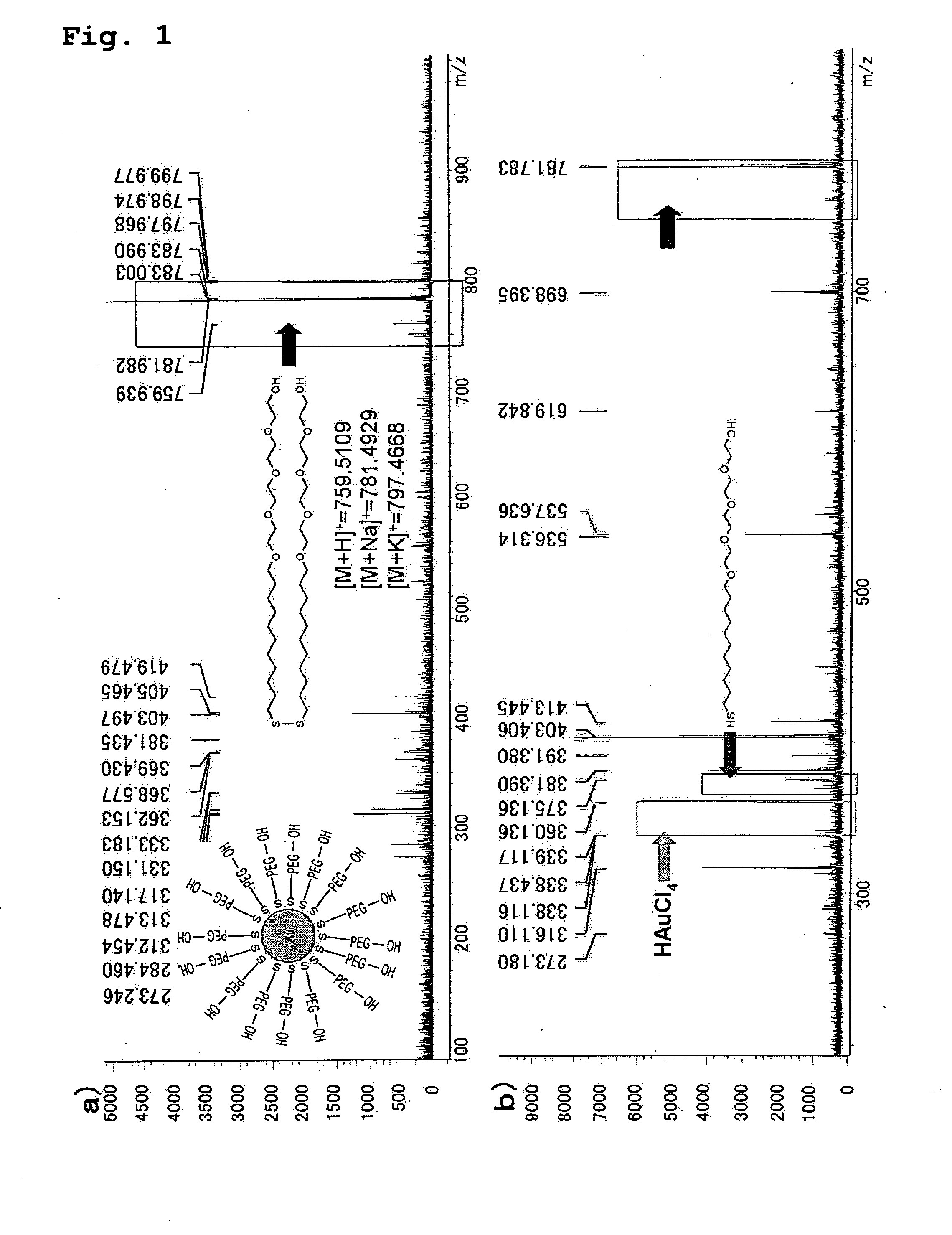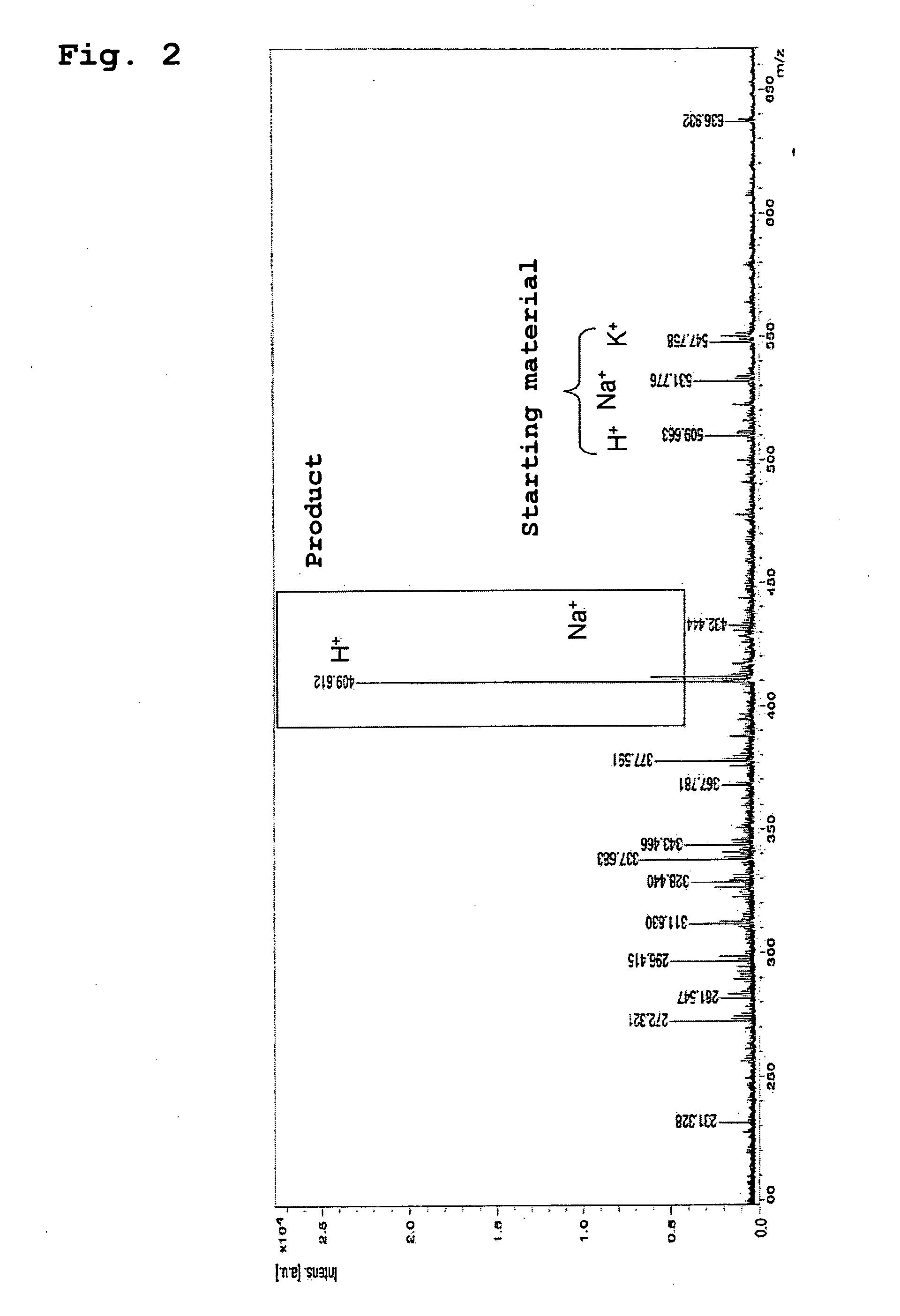Mass analysis method using fine metal particles
a technology of metal particles and mass analysis, applied in the field of mass analysis methods using fine metal particles, can solve the problems of difficult identification of the expression pattern difficulty in synthesis of the sugar chain, and extremely complex structure of the sugar chain, and achieve high sensitivity to the sulfur atom-containing derivative, accurate real-time monitoring, and high measurement accuracy
- Summary
- Abstract
- Description
- Claims
- Application Information
AI Technical Summary
Benefits of technology
Problems solved by technology
Method used
Image
Examples
example 1
Production of Water-Soluble Fine Gold Particles and MALDI TOF Mass Spectrometry for Direct Detection of a Thiol Compound Supported on a Surface of the Particle
[0422]
[0423]25 mg of tetrachloroauric acid was dissolved in 1 mL of ultrapure water in a flask. 55 mg of ligand (1) was dissolved in 20 mL of methanol and was then added to the tetrachloroauric acid aqueous solution. 56 mg of Sodium borohydride dissolved in 5 mL of ultrapure water was gradually added into the solution with vigorous agitation. After agitation at room temperature for 2 hours, the reaction solution was subjected to centrifugal filtration (20° C.; 3,500 rpm) with Centriplus YM50 (Millipore), thereby obtaining a fine gold particle which had ligand (1) introduced on the surface thereof. The fine particles were soluble in water, acetone, and methanol. The fine particles and the filtrate, obtained in the centrifugal filtration process, were subjected to MALDI-TOF Mass spectrometry measurement (respectively, FIGS. 1a a...
example 2
MALDI TOF Mass Spectrometry for Tracking of a Chemical Reaction Using Fine Gold Particles as a Solid Phase Carrier
[0424]
[0425]Methanol solution of compound (2) which contained disulfide, was added to a tetrachloroauric acid aqueous solution, and a sodium borohydride aqueous solution was gradually dropped thereto. The solution was stirred at room temperature for 3 hours, and then was subjected to centrifugal filtration using Centriplus YM-50, thereby obtaining fine gold particles which had compound (2) introduced thereon. The fine particles were dissolved in methanol, with trifluoroacetic acid supplemented thereto up to a concentration of 25%. The solution was agitated at room temperature for 2 hours. Thereafter, a part of the reaction system was subjected to centrifugal filtration using Microcon. Development of reaction was confirmed by MALDI-TOF mass spectrometry measurement using DHB as a reagent (FIG. 2). Observed peaks in FIG. 2 indicates that the product formed through the elim...
example 3
Production of a Sugar Chain-Fine Gold Particle Complex and MALDI-TOF Mass Spectrometry for Direct Measurement of a Molecular Weight of a Ligand
[0426]
[0427]Maltotriose derivative (3) having a thiol group at the aglycone terminus (12.5 mg, 21.6 μmol) was dissolved in 20 mL of methanol, and 15 μL of tetrachloroauric acid was added thereto. Sodium borohydride aqueous solution (30 mg / 2 mL, 0.79 mmol) was gradually added to the solution. The solution was stirred at room temperature for 3 hours, and then was subjected to centrifugal filtration using Centriplus YM-50, thereby purifying the fine particles. The fine metal particles were dissolved in ultrapure water, and then subjected to MALDI-TOF mass spectrometry using 2,5-dihydroxybenzoic acid (DHB) as a matrix (FIG. 3). FIG. 3 shows that observed peaks were attributed to the disulfide 3, indicating that mass of a ligand can be readily detected by MALDI-TOF Mass spectroscopy in the case of a fine gold particle modified with a sugar chain l...
PUM
| Property | Measurement | Unit |
|---|---|---|
| Diffuse reflection IR spectrum | aaaaa | aaaaa |
Abstract
Description
Claims
Application Information
 Login to View More
Login to View More - R&D
- Intellectual Property
- Life Sciences
- Materials
- Tech Scout
- Unparalleled Data Quality
- Higher Quality Content
- 60% Fewer Hallucinations
Browse by: Latest US Patents, China's latest patents, Technical Efficacy Thesaurus, Application Domain, Technology Topic, Popular Technical Reports.
© 2025 PatSnap. All rights reserved.Legal|Privacy policy|Modern Slavery Act Transparency Statement|Sitemap|About US| Contact US: help@patsnap.com



